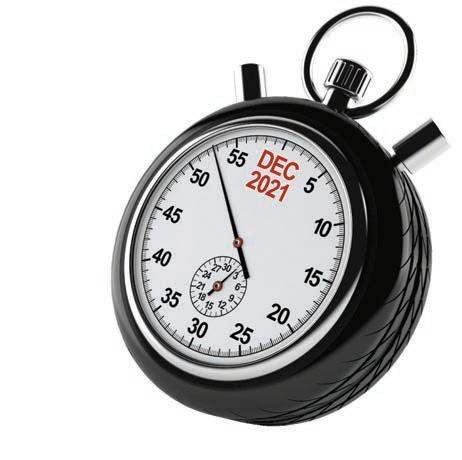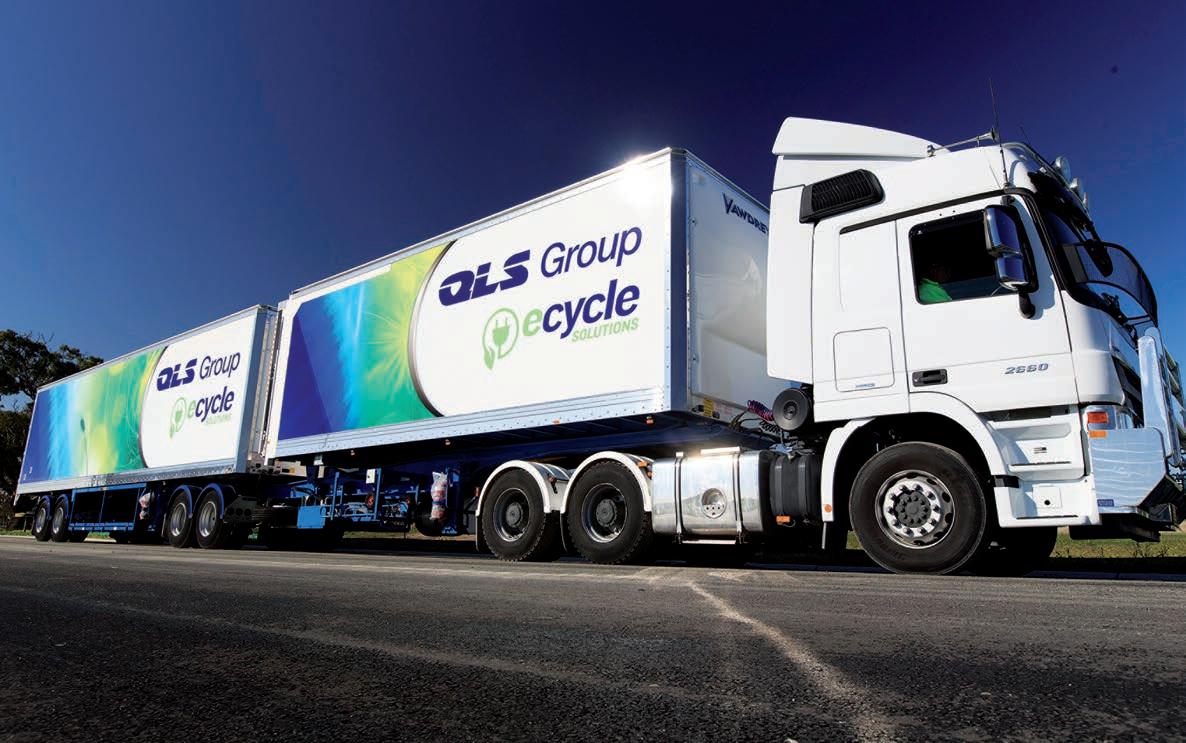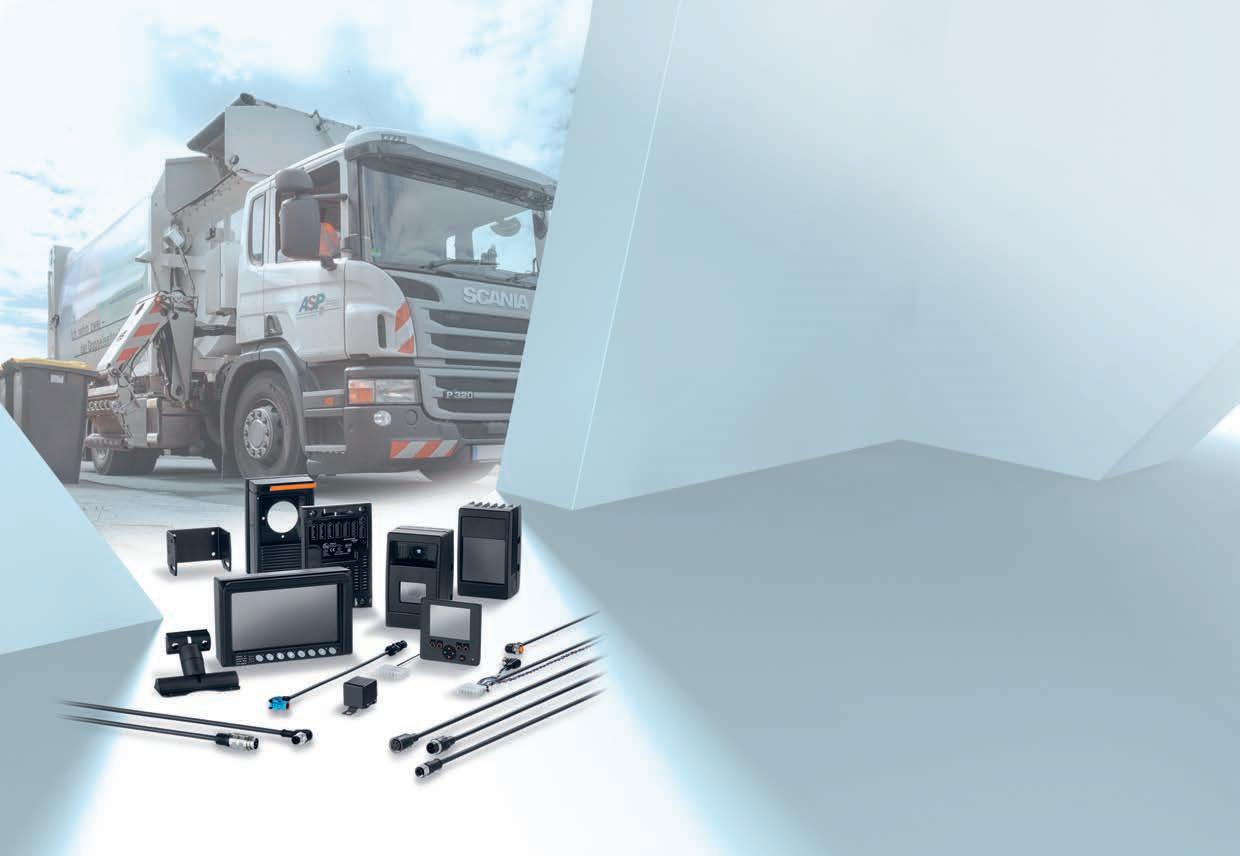
10 minute read
TYRE TRANSITION
WITH THE EXPORT BAN ON WHOLE USED TYRES FAST APPROACHING, TYRE STEWARDSHIP AUSTRALIA HAS LAUNCHED A BALER TRANSITION PROGRAM TO SUPPORT MARKET EVOLUTION.
In late May, the Council of Australian Government’s ban on waste exports was delayed due to COVID-19 restrictions. In a statement at the time, Environment Minister Sussan Ley said the effects of COVID-19 made it “impossible” for parliament to pass legislation in time for the 1 July deadline. However, Ms Ley assured industry that the Federal Government would not waiver on its commitment to the ban, with the delay set to solely impact the proposed timeline for unprocessed glass.
Despite the pandemic’s effect on ban legislation, the waste and resource recovery industry has demonstrated great resilience and adaptability. Many, including Tyre Stewardship Australia (TSA) CEO Lina Goodman, are using the unprecedented global environment as a learning opportunity and time for reflection.
“The impacts of COVID-19 have almost given us a sneak peak of what may eventuate when the ban comes into effect,” Goodman explains.
“Today, we are seeing the detrimental impact reduced markets, both on-shore and off, are having on the sustainable disposal of used tyres.”
When the ban was first announced, Goodman notes that some argued a ban on baled tyres could come into effect immediately. The reasoning: there is already enough local processing capacity, so the market would be fine. In Goodman’s view, however, this line of thinking is too simplistic.
“Having the infrastructure and ensuring material gets to the gate at a competitive price to ensure it is processed safely are two very differing concerns,” she says.
“Also, as the recent past has evidenced, you can process all you want, but you’re still in trouble if the product has nowhere to go.”
As such, Goodman says domestic market demand is now more critical than ever. She adds that if foreign tyre derived fuel demand falters, Australia, and the global sector, will be critically exposed.
“As global demand for used tyres shrinks, and nations close down manufacturing and grapple with the management of COVID-19, the consumption, collection and disposal of tyres continues,” Goodman says.
As collectors start to emerge from the impacts of COVID-19 and the diminished value of their material, TSA hopes two things will happen.
“Firstly, recyclers can survive the recent set back, secondly, there is enough will and determination to get back on to their transition plans in the lead up to the December 2021 deadline,” Goodman says.
“TSA is concerned that a change in collection prices will encourage unscrupulous behaviour to enter the market, this may result in increased illegal dumping, stockpiles and unnecessary burden on reputable recyclers.”
Presently, Australia, like many nations including the UK and parts of Europe, is finding it difficult to move collected material to countries that were traditionally a home for these products. Late last year, India’s National Green Tribunal directed the Central Pollution Control to restrict the import of waste tyres. In 2018-19, India received 47 per cent of Australia’s tyre exports.
“There is no easy fix to this problem – particularly as this may be a persistent trend with declines in oil and coal prices reducing demand for tyre derived fuel – which is often a substitute for such commodities,” Goodman says.
“However, Australia does have something that many other nations lack – a growing market for crumb rubber across a range of sectors.”
Since inception, TSA has committed $6 million to support projects designed to increase the use of used tyres in Australia. Goodman notes particular progress in the roads sector, with collaborative TSA projects seeing WA’s crumb rubber consumption double in two years.
When the export ban on all whole used tyres commences, approximately 70,000 tonnes of material is set to be directly affected. According to the Phasing out Waste Exports Response Strategy, Australian businesses that rely on the export of whole baled tyres have expressed concerns about the impact of the ban on their viability.
To support those operators, TSA began a new baling transition program in April. Open to all TSA and non-TSA participants, the program is designed to help operators engage more broadly on their current business model, and the
Roads YOUR $2,259,357 (44.6%) of funds are currently committed to road based projects. TIME FEATURED PROJECT One of the benefits of a mobile crumb rubber blending solution is STARTS High Shear Mobile Crumb Rubber Mixer NOW. that it can be quickly and effectively moved to demand points, providing top quality, consistent product to consumers nation-wide; particularly helpful in regional and remote areas outside the reach of traditional fixed
EDI Downer plants. Through the provision of highquality product to a broader range of consumers, the project is expected to consume over 2,500 tonnes of With the Australian ban on high-quality rubber per year over an estimated 10-year lifecycle period of the plant. exportation of baled tyres coming into effect December 2021,

the time to implement change is now!
TSA FUNDING (EXCL. GST)
$175,000
POTENTIAL MARKET VOLUMES P.A
2,500t
YEAR INITIATED
2018/2019
Receive support from TSA’s Balers Transition Program. Register by emailing getonboard@tyrestewardship.org.au
www.tyrestewardship.org.au
changes required to remain in business beyond the December 2021 deadline.
“The support TSA can offer includes co-ordinating “virtual” round table discussions with relevant state-based authorities to help navigate through approval process requirements, provide guidance on possible solutions and connect organisations with other commercial entities,” Goodman says.
According to Goodman, balers that have an appetite to transition towards greater recovery efforts require support in multiple ways. First, lengthy timeframes for approvals needs to be addressed. And second, there needs to be an increased understanding of issues such as power, suitable site location and the importation of additional recycling equipment. Importantly, Goodman says regulators managing approval processes need to understand that the tyre recycling sector is proactively attempting to get business ready.
In addition to the baler transition program, TSA has been actively contacting affected parties to discuss the scenarios, business impacts and potential changes the ban will deliver.
“Upon the announcement of the export ban, TSA immediately engaged with relevant stakeholders to understand the implications, support required to assist exposed businesses and impacts of the proposed ban on the sector more broadly,” Goodman says.
TSA is also engaging with responsible authorities to communicate how the ban and other emerging factors are influencing current market circumstances. As reported by WMR in May, TSA’s Used tyres supply chain and fate analysis report suggests recent decreases in stockpiling are partially attributed to increased volumes of baled tyres being exported.
“There’s no doubt that baling over the years has substantially influenced the orientation of the market locally and globally. If it didn’t, why would the industry have pushed to ban it? Conversely, it would be hard to deny that once baling is removed from the market, that there will be a big adjustment to these changing dynamics,” Goodman says.
There is an expectation, Goodman explains, that this will occur when the ban is enacted.
“However, in a sense, the ban is somewhat superfluous at the moment. With decreasing Indian demand for bales through policy changes and global trade disruption via COVID-19 – we’re already seeing the bale market disrupted to the point of cessation, as there is a lack of trade outlets for baled material,” she says.
“Now, this is a point in time due to multiple global market factors – but the end result is a curtailing of bale outlets from Australia – which in effect, is the same impact as a ban. Unfortunately, we are seeing extreme stress on the market with blocked outlets to foreign end markets. This is leading to businesses under stress, finding it difficult to deal with accumulated feedstock.”
Goodman adds that these circumstances may not prevail and may be alleviated should markets open up and COVID-19 be better managed globally.
“However, what it does demonstrate is that the resource recovery industry, regulators and organisations such as TSA need to work together proactively.
“We need to use technology to better manage sites. We need to work across jurisdictions in a coordinated way – because each state is affected by global circumstances in common ways, so we need a common and coordinated approach.”
In 2019, Ecycle Solutions collected over 11,000 tonnes of ewaste for recycling.
Reverse logistics ewaste

ECYCLE SOLUTIONS IS HELPING BUSINESSES REDUCE THEIR WASTE TO LANDFILL RATE THROUGH INNOVATIVE EWASTE COLLECTION, RECYCLING AND DISPOSAL SERVICES.
Millions of electronic devices such as televisions and computers are discarded in Australia every year, with ewaste now the fastest-growing waste stream in the country. Established in 2011, the National Television and Computer Recycling Scheme (NTCRS) provides Australian households and small businesses with access to free industry-funded collection and recycling services.
According to Chris Tangey of Ecycle Solutions, the NTCRS is properly designed and works well mechanically.
He adds that it has regulations that demand compliance and prescribe penalties for non-compliance.
“All stakeholders signed off with a positive assessment for the continuation and expansion of the scheme during the 2018 Statutory Review,” Tangey says.
More than 1800 collection services have been made available to the public since 2011, with over 290,000 tonnes ewaste collected and recycled.
The scheme is operated by four government-approved Co-Regulators on behalf of industry, including Ecycle Solutions.
Ecycle Solutions collects end-of-life ewaste via free drop-off and collection points at participating retail stores such as Harvey Norman, The Good Guys and Radio Rentals.
Since its launch in 2013, Ecycle Solutions’ ewaste service has grown significantly. The company now works with over 300 manufacturers and retailers, and in 2019, collected over 11,000 tonnes of ewaste.
According to Tangey, the NTCRS requires all importers of electronic goods into Australia to recycle 66 per cent of the mass they bring in.
Beginning at 30 per cent in 2011, Tangey say the recycling rate increases by two per cent each year. He adds that the rate is capped at 80 per cent due to a belief recycling beyond that level is challenging.
At the heart of the Ecycle Solutions’ system is parent company QLS Logistics, a national transport company that regularly visiting metropolitan, regional and country retail stores throughout Australia.
“As NTCRS partners, when QLS drivers deliver new white and brown goods to retail stores, they collect purpose-built ewaste bins full of end-of-life televisions and computers, which are then recycled, ” Tangey says.
“This ultimately functions as a reverse logistics network, facilitating a sustainable closed loop system.”
Under the scheme, Co-Regulators such as Ecycle Solutions are required to provide reasonable access for the general public to recycle their ewaste, with approximately 300 collection points across Australia. Tangey says in metro areas such as Melbourne and Sydney, reasonable access equates to one collection point per 250,000 people. He adds that in Melbourne, that equates to a minimum of 17 collection points. “When a member of the public or a small business visits one of our participating retailers they can drop their goods off free-of-charge, and are not required to buy anything. “We audit those sites each year to ensure they are providing a compliant, accessible and streamlined service.” Once collected by Ecycle Solutions, the ewaste is sent to third party Projekt1 03.06.20 10:52 Seite 1

specialist ewaste recyclers where greater than 90 per cent become reusable materials.
Ecycle Solutions use 10 recyclers in total, with four located in NSW and Victoria respectively, and another three across Western Australia, Queensland and South Australia.
“We tend to aim at small-to-medium recyclers, which are often family run businesses. They are all accredited and audited to ensure they comply with all relevant regulations,” Tangey explains.
As the sole co-regulated product stewardship scheme, the NTCRS stands out within the wider product stewardship ecosystem. The scheme is effective, Tangey says, because of its extended producer responsibility focus.
“If a company is importing a future waste material into the country, they have to pay for that waste to be dealt

with. That is why the scheme is so successful, as often times people need a regulatory push to transition to more sustainable practices,” he says.
As the industry continues to wait on the Federal Government’s Product Stewardship Act Review, Tangey says he would like to see the NTCRS expanded to include more products such as batteries and photovoltaic solar panels.
“We need to expand the scheme so that more waste is regulated, and resource recovery rates grow,” he says.
“The NTCRS is really starting to close the loop in Australia, with more commodities such as metals, plastics and motherboards recycled onshore. “It’s a great example of resource recovery in action, one that would benefit from an expanded material focus.”






